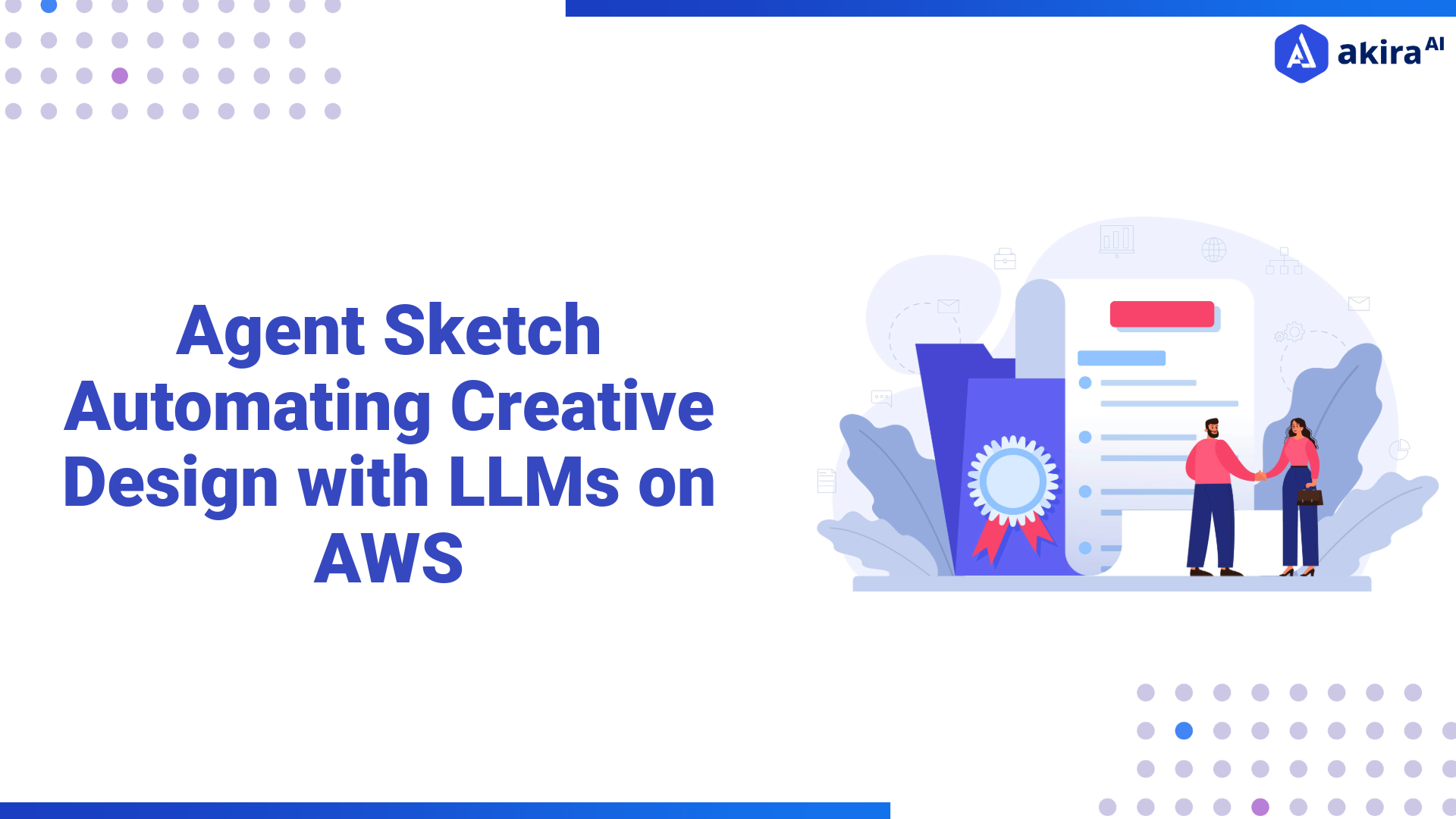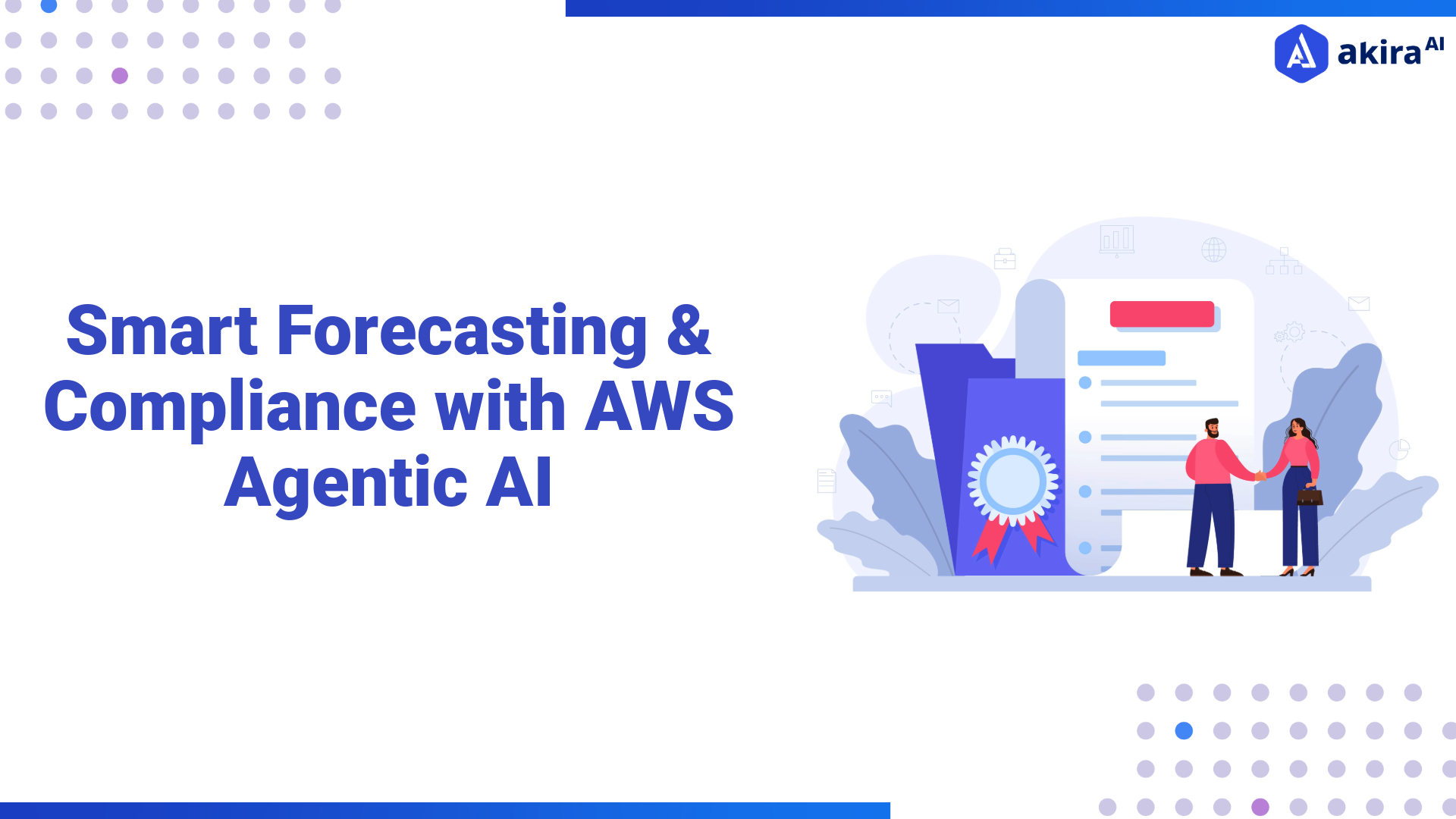Partner Solution
Solution Overview
Xenonstack implemented a modular, agent-based creative automation platform designed to address the scalability, consistency, and governance challenges of enterprise design workflows. Built on a cloud-native architecture and deployed using Amazon EKS, the solution orchestrates intelligent design agents for generating, transforming, reviewing, and managing digital assets such as logos, icons, and branded visuals.
AI models accessed through Amazon Bedrock for text-to-image generation.
Agent logic and workflows are defined declaratively, allowing business teams to configure asset generation parameters, brand constraints, and review rules without modifying code.
A key capability of the platform is its LLM-driven design orchestration, where agents leverage models to generate creative suggestions, textual prompts, or brand-aligned asset variations. This enables a human-in-the-loop experience where designers and marketers can rapidly iterate and approve visuals with AI assistance—improving productivity and brand compliance.
To enhance personalization and maintain creative continuity, Agent Sketch integrates a dual-layer context management system:
-
Short-Term Context using Amazon ElastiCache (Redis): Maintains session-level preferences, recently used styles, and dynamic prompt refinements for immediate reuse across tasks.
-
Long-Term Memory & Relationships using Amazon Neptune: Stores a persistent knowledge graph of user-brand interactions, approved asset lineage, campaign mappings, and design rules—enabling smarter prompt generation, enforcement of branding logic, and historical recall.
This context engineering approach transforms Agent Sketch from a static asset generator into a memory-aware creative assistant that understands brand history, user intent, and campaign context.
Security and scalability are built into the platform from the ground up, with IAM-based access control, private VPC endpoints, and GitOps-style CI/CD pipelines enabling seamless deployment across dev, staging, and production environments. Amazon CloudWatch is used for end-to-end observability of agent performance, asset generation latency, and model inference health, while output metrics feed into dashboards for creative ops teams to monitor performance and content readiness.
By centralizing creative logic, automating asset workflows, and enabling intelligent design agents, Agent Sketch delivers a scalable, auditable, and extensible platform that empowers both design and marketing teams to accelerate production, maintain brand integrity, and innovate with AI at scale.
AWS Services Used
-
Amazon EKS: Container orchestration for managing microservices
-
Amazon Bedrock: Provide access to models to generate images from text.
-
Amazon S3: Primary storage for generated design assets, model artifacts, logs, and agent outputs.
-
Amazon DynamoDB: NoSQL store for workflow metadata, session states, and audit logs.
-
Amazon API Gateway: Exposing REST/HTTP APIs for external applications, UIs, or partner systems to interact with design agents.
-
Amazon CloudWatch: Metrics, and logs for agents, modes and application services.
-
Amazon QuickSight: For dashboarding asset generation metrics, agent activity, and creative pipeline performance.
-
Amazon ElastiCache (Redis): For short-term memory context.
-
Amazon Neptune: For long-term knowledge graph and relationship mapping.
Architecture Diagram
Implementation Details
The implementation followed an Agile, sprint-based delivery model executed over a 9-month period, involving iterative feature development, integration testing, and continuous stakeholder feedback from design leads, marketing teams, and platform architects. The engagement began with structured discovery sessions that included branding stakeholders, ML engineers, and DevOps architects to define key design automation workflows, asset governance requirements, and scalability objectives such as version control, visual consistency, and real-time integration with creative systems.
Visual Generation Agent core components were containerized and deployed on Amazon EKS. These agents interacted with Stable Diffusion models accessible by Amazon Bedrock, enabling AI-powered generation of brand-aligned visuals such as logos, icons, and banners.
During mid-phase development, a context memory layer was introduced to enhance generation accuracy, personalization, and workflow continuity:
-
Amazon ElastiCache (Redis) was integrated for real-time, session-level memory tracking recent prompts, selected styles, and active brand configurations.
-
Amazon Neptune served as the long-term knowledge graph storing relationships between users, brands, assets, and campaigns to drive intelligent, context-aware prompt construction and creative decision-making.
Integration pipelines were established via Amazon API Gateway, allowing external systems such as application FE to interact with agent. Authentication and authorization were managed using IAM roles, with all endpoints secured within VPC-private subnets to meet enterprise-grade security requirements.
Monitoring and observability were embedded using Amazon CloudWatch, capturing real-time metrics for agent execution, model inference latency, asset generation status, and API health.
Timeline and Major Milestones:
Months 1–2:
-
Set up Amazon EKS cluster with baseline IAM, VPC, and networking
-
Initialize Git repositories and infrastructure as code (Terraform, Helm)
-
Define agent workflows and system architecture
Months 3–4:
-
Configure Amazon S3 (with versioning) and DynamoDB tables
-
Implement prompt ingestion logic and asset metadata schema
-
Develop modular workflow templates and API structure
Month 5:
-
Containerize core agents
-
Stable Diffusion models configuration on Amazon Bedrock.
-
Set up CI/CD pipelines using CodePipeline, CodeBuild, and Amazon ECR
Months 6–7:
-
Implement agent orchestration and internal APIs
-
Integrate Bedrock model with agent.
-
Connect FE application via Amazon API Gateway
Months 8–9:
-
Configure Amazon CloudWatch for monitoring and alerting
-
Build dashboards using Amazon QuickSight
-
Finalize production deployment and perform UAT
-
Deliver documentation and environment handover
Innovation and Best Practices
The Agent Sketch platform was architected in alignment with the AWS Well-Architected Framework, emphasizing security, reliability, operational excellence, and cost optimization for AI-driven visual content generation. A container-native approach was adopted from the outset, deploying intelligent agents as loosely coupled microservices on Amazon EKS, enabling scalable execution, fault isolation, and independent versioning of each component in the design generation pipeline.
All infrastructure resources—including networking, IAM, compute, and storage—were provisioned using Infrastructure as Code (IaC) with Terraform and Helm, ensuring reproducibility, auditability, and environment parity across development, staging, and production. This allowed teams to perform rapid rollbacks, environment cloning, and multi-region setup with minimal manual intervention.
A key innovation in Agent Sketch was the implementation of agent-driven creative orchestration, where each functional stage of visual asset creation was abstracted into a dedicated agent. This modular architecture enabled organizations to extend or customize workflows without modifying the core engine, thereby supporting varied design operations such as logo generation, social media banners, and UI components within a single, unified platform.
To maintain compliance and traceability, every asset generated was stored in Amazon S3 with versioning enabled, along with its prompt metadata, generation timestamp, and agent context. This provided a complete lineage of visual content, crucial for regulated industries or campaigns requiring reproducibility. Real-time logs and metrics were streamed to Amazon CloudWatch, and generation throughput and agent activity were visualized through Amazon QuickSight dashboards, enabling proactive system tuning and performance analysis.
Collectively, these innovations and best practices positioned Agent Sketch as more than just a generative design tool. It became a highly governable, scalable, and extensible creative automation platform, capable of adapting to evolving brand requirements, multi-team workflows, and enterprise-grade operational needs.
Results and Benefits
Business Outcomes and Success Metrics
-
60% reduction in manual design workload through automation of routine asset creation
-
4x faster turnaround time for visual content generation across digital campaigns
-
95% consistency in brand guideline adherence via automated compliance validation
Technical Benefits
-
Containerized microservices deployed on Amazon EKS enabled modular scalability and low operational overhead
-
Stable Diffusion-based models accessed via Amazon Bedrock provide reliable inference at scale.
-
Versioned asset storage on Amazon S3 ensured traceability and rollback across the asset lifecycle
-
Real-time monitoring via Amazon CloudWatch ensured proactive issue resolution and performance tuning
Customer Testimonial
“Agent Sketch has completely transformed how we approach creative workflows. What used to take days of design iterations now takes minutes. The consistency it delivers across our brand assets is outstanding. The automation doesn’t replace our creatives it empowers them.”
— UI/UX Designer
Lessons Learned
Challenges Overcome
-
Workflow complexity increased with multi-agent orchestration.
-
Controlling output quality through effective prompting was a key challenge when generating brand-aligned visuals
-
Maintaining secure and traceable storage was addressed by enabling S3 versioning and applying strict metadata tagging, ensuring compliance and full asset lineage with minimal overhead.
Best Practices Identified
-
Use modular, agent-based design patterns to isolate logic and allow flexible workflow customization
-
Leverage Amazon Bedrock to access foundation models while managing versioning and safe experimentation externally.
-
Enable S3 versioning and metadata tagging to support full asset lineage, compliance, and rollback
-
Implement API Gateway + IAM for secure, controlled access to asset generation services
Future’s Plans
-
Expand support for video and motion graphics generation using transformer-based models and multimodal prompts.
-
Integrate with customer feedback loops to improve model output based on real-world usage patterns.
-
Explore multi-language prompt support to enable localization of visuals for global marketing teams.





